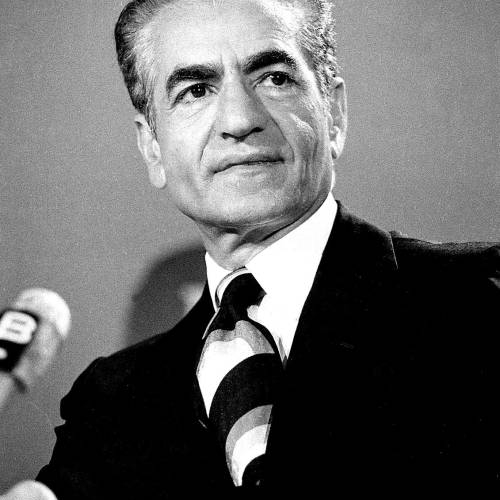Mohammadreza Shah Pahlavi (October 26, 1919 – July 27, 1980) was the last king of Iran and the second king of the Pahlavi dynasty who ruled from 1941 to 1979. He became the king after his father Reza Shah in 1941 and remained in power until the 1979 revolution, which ended the imperial system and established the Islamic Republic of Iran.
While Mohammad Reza was six years old, his father became the king and he became the crown prince of Iran. He completed his elementary education in Iran and secondary education in Switzerland, and upon returning to Iran, he graduated from the officer college with the rank of second lieutenant. With the occupation of Iran in World War II and the forced abdication of Reza Shah, Mohammad Reza Pahlavi succeeded his father with the help of Mohammad Ali Foroughi.
At the beginning, he had little power, but with the end of Iran's occupation and the withdrawal of foreign forces from the country, with the support of the United States and the policy of the then prime minister, Ahmad Qawam, he ended the autonomous government in Azerbaijan and Kurdistan. Some time after being saved from an unsuccessful assassination attempt, with the formation of the Senate, Mohammad Reza Shah's powers were increased
Mohammad Reza Shah Pahlavi made economic, social and political reforms during the White Revolution. He planned to transform Iran into a world power by modernizing the country by nationalizing key industries, abolishing the serfdom system and expanding industries. The Shah also promoted Iranian nationalism through various policies, including the popularization of symbols such as Cyrus the Great, the Cyrus Cylinder, and the Tomb of Cyrus the Great. The Shah initiated major investments in infrastructure, land subsidies and grants for the peasant population, profit sharing for industrial workers, construction of nuclear facilities, nationalization of Iran's natural resources, and literacy programs that were considered one of the most effective in the world. The Shah also allocated economic policy tariffs and preferential loans to Iranian companies, which was considered to be in the pursuit of creating an independent economy for the country. The production of automobiles, household appliances and other goods in Iran increased significantly and led to the creation of a new industrial class that was safe from the threats of foreign competition.
In the 70s, Pahlavi was regarded as a master statesman and used his growing power to approve the 1973 Sale and Purchase Agreement. These reforms culminated in decades of sustained economic growth that made Iran one of the fastest growing economies among developed and developing countries. During the 37-year rule of Mohammad Reza Pahlavi, Iran spent billions of dollars on industrial, educational, health, and military expenses, and enjoyed an economic growth rate higher than that of the United States, Great Britain, and France. Likewise, Iran's national income increased 423 times and the country witnessed an unprecedented increase in per capita income - which reached its highest level at any point in Iran's history - and high levels of urbanization. By 1978, with Pahlavi's focus on defense spending, which he saw as a means to end the intervention of foreign powers in the country, he placed Iran's military position as the fifth largest army in the world
